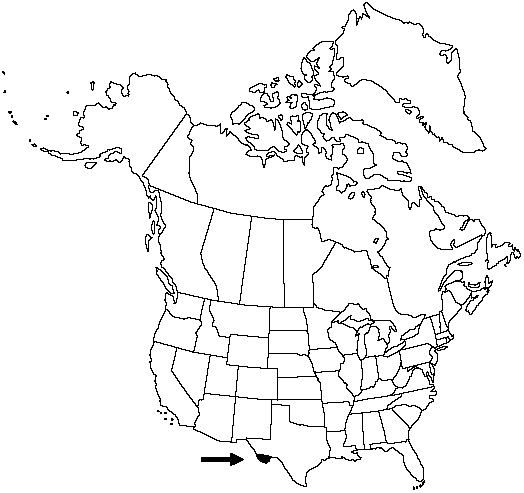Difference between revisions of "Notholaena greggii"
Contr. U.S. Natl. Herb. 17: 606. 1916.
FNA>Volume Importer |
FNA>Volume Importer |
(No difference)
| |
Revision as of 18:56, 24 September 2019
Stem scales strongly bicolored, margins brown, broad and well defined, thin, erose to denticulate. Leaves 4–20 cm. Petiole light brown, equal to or somewhat shorter than blade, grooved or flattened adaxially, bearing scattered glands and a few scales near base. Blade narrowly deltate, 2–3-pinnate, 2–4 times longer than wide, abaxially with conspicuous whitish farina, scales absent, adaxially glandular; basal pinnae slightly larger than adjacent pair, ± equilateral, proximal basiscopic pinnules not greatly enlarged. Ultimate segments sessile or subsessile, narrowly adnate to costae or free; segment margins strongly revolute, often concealing sporangia. Sporangia containing 64 spores. 2n = 60.
Phenology: Sporulating summer–fall.
Habitat: Calcareous slopes and ledges, usually on limestone or gypsum
Elevation: 500–1000 m
Distribution

Tex., n Mexico.
Discussion
Notholaena greggii is rarely collected in the flora area, and all known localities lie within 25 km of the Mexican border in the Big Bend region of Texas. It is most closely related to N. bryopoda Maxon, a gypsophile endemic to the southern Chihuahuan Desert.
Selected References
None.